

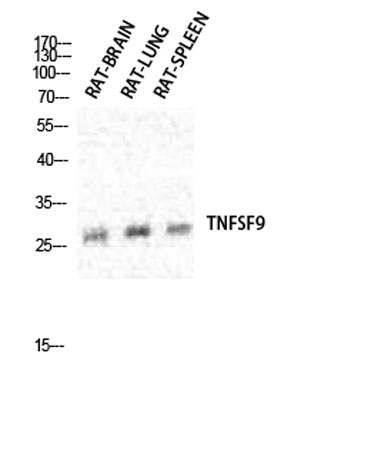
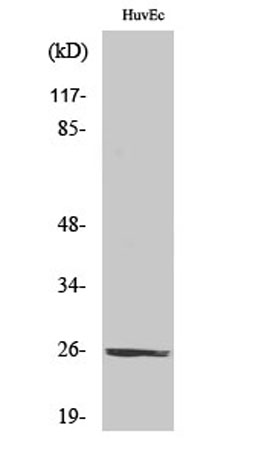
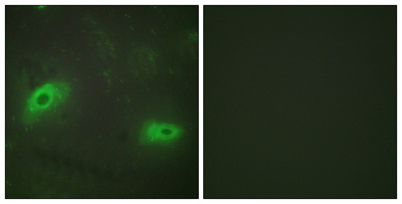
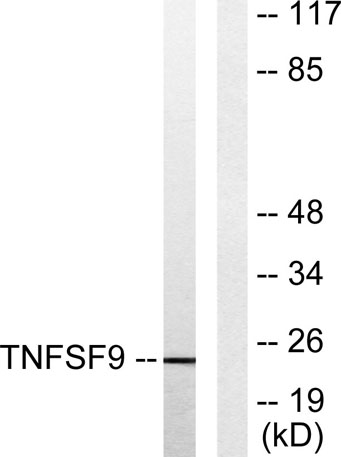
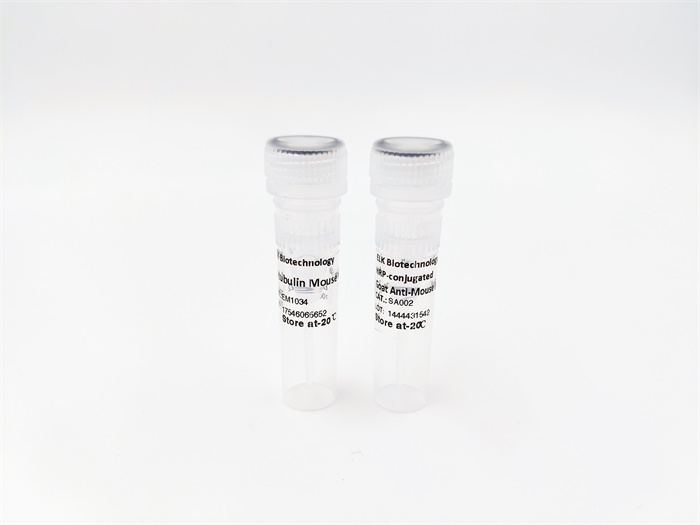



CD137L rabbit pAb
 One-click to copy product information
One-click to copy product information$148.00/50µL $248.00/100µL
| 50 µL | $148.00 |
| 100 µL | $248.00 |
Overview
| Product name: | CD137L rabbit pAb |
| Reactivity: | Human;Rat;Mouse; |
| Alternative Names: | TNFSF9; Tumor necrosis factor ligand superfamily member 9; 4-1BB ligand; 4-1BBL |
| Source: | Rabbit |
| Dilutions: | Western Blot: 1/500 - 1/2000. Immunofluorescence: 1/200 - 1/1000. ELISA: 1/20000. Not yet tested in other applications. |
| Immunogen: | The antiserum was produced against synthesized peptide derived from human TNFSF9. AA range:31-80 |
| Storage: | -20°C/1 year |
| Clonality: | Polyclonal |
| Isotype: | IgG |
| Concentration: | 1 mg/ml |
| Observed Band: | 23kD |
| GeneID: | 8744 |
| Human Swiss-Prot No: | P41273 |
| Cellular localization: | Membrane; Single-pass type II membrane protein. |
| Background: | The protein encoded by this gene is a cytokine that belongs to the tumor necrosis factor (TNF) ligand family. This transmembrane cytokine is a bidirectional signal transducer that acts as a ligand for TNFRSF9/4-1BB, which is a costimulatory receptor molecule in T lymphocytes. This cytokine and its receptor are involved in the antigen presentation process and in the generation of cytotoxic T cells. The receptor TNFRSF9/4-1BB is absent from resting T lymphocytes but rapidly expressed upon antigenic stimulation. The ligand encoded by this gene, TNFSF9/4-1BBL, has been shown to reactivate anergic T lymphocytes in addition to promoting T lymphocyte proliferation. This cytokine has also been shown to be required for the optimal CD8 responses in CD8 T cells. This cytokine is expressed in carcinoma cell lines, and is thought to be involved in T cell-tumor cell interaction.[provided b |
-
 Western Blot analysis of various cells using CD137L Polyclonal Antibody diluted at 1:1000
Western Blot analysis of various cells using CD137L Polyclonal Antibody diluted at 1:1000 -
 Western Blot analysis of HuvEc cells using CD137L Polyclonal Antibody diluted at 1:1000
Western Blot analysis of HuvEc cells using CD137L Polyclonal Antibody diluted at 1:1000 -
 Immunofluorescence analysis of HeLa cells, using TNFSF9 Antibody. The picture on the right is blocked with the synthesized peptide.
Immunofluorescence analysis of HeLa cells, using TNFSF9 Antibody. The picture on the right is blocked with the synthesized peptide. -
 Western blot analysis of lysates from HUVEC cells, using TNFSF9 Antibody. The lane on the right is blocked with the synthesized peptide.
Western blot analysis of lysates from HUVEC cells, using TNFSF9 Antibody. The lane on the right is blocked with the synthesized peptide.

 Manual
Manual